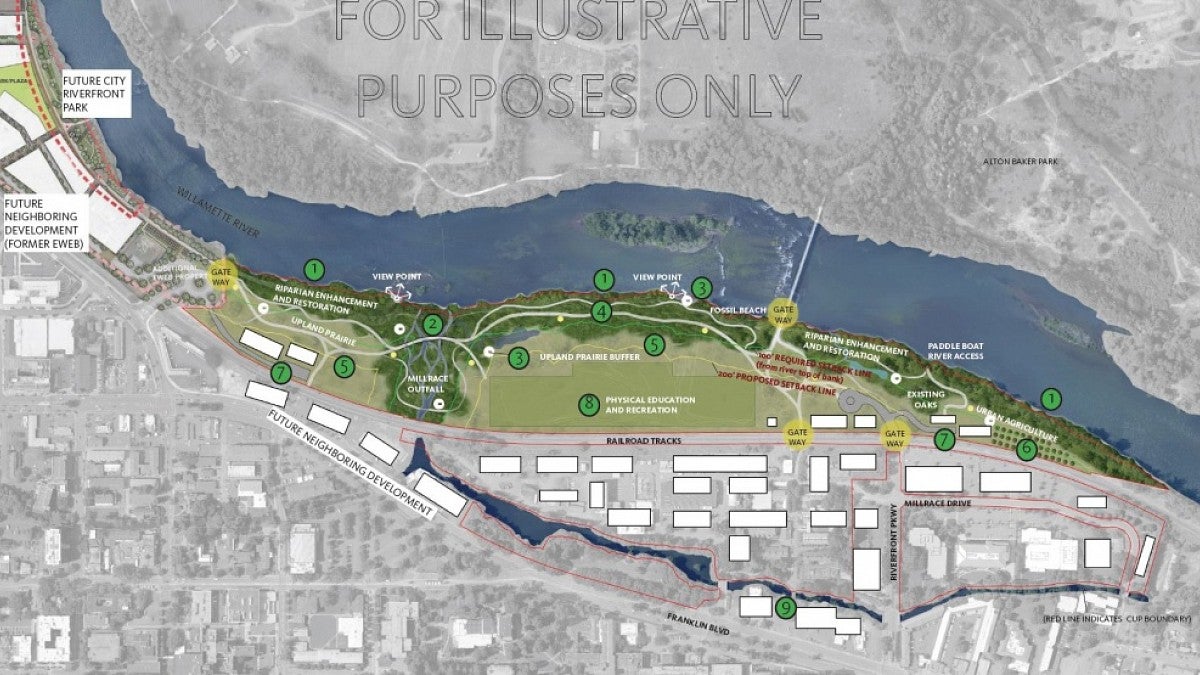The three-year-long process to earn a north campus conditional use permit passed a critical milestone Oct. 31 with formal approval of the university’s 30-year permit application.
“This CUP will allow the university to meet a wide range of its needs, which is critical to the success of students and faculty,” said Michael Harwood, associate vice president for campus planning and facilities management. “It also moves us forward in our common desires to enhance and restore the university’s riverfront and connect people to the river.”
The joint conditional use permit and Willamette greenway permit applies to 77 acres of land in the Riverfront Park Special Area Zone. The permit, required by the zone, grants the university the ability to restore and develop its land for university uses and research that complement the university as needs arise.
The previous permit, which was in place for 23 years, expired in 2012. A new permit was required before the university could develop any of the acreage.
“This all started with our Framework Vision Project, completed in 2016,” said Emily Eng, senior planner with the office of campus planning. “The process to develop the CUP master site plan started in 2017 and included an incredible amount of outreach, including focus groups, open houses, Campus Planning Committee meetings, community interviews, e-updates, Around the O articles, a project web page and numerous information-sharing meetings with critical stakeholders. That level of engagement was tremendously helpful in shaping this permit.”
The key component of the permit application is the master site plan, which balances the long-term needs of the university and desires of the community as a whole and commits to restrictions that go above and beyond the city’s approval criteria. Highlights include:
- Establishment of a 200-foot development setback from the top of the riverbank, twice what city code requires.
- Dedication of 31 acres of the total 77 acres to conservation in addition to other open space, including 25 acres of conservation along the river.
- Stringent building coverage and height limitations, resulting in most of the riverfront being dedicated to conservation and open space.
- New bike path alignment, improved river access and no new through-roads.
- Active uses connecting people to the river and contributing to a safe riverfront.
Of the 42 acres between the railroad tracks and the Willamette River, the master site plan proposes:
- 60 percent for conservation.
- 20 percent for other open space.
- 16 percent for recreation fields.
- 4 percent for buildings.
With the permit now in place, the university would proceed with its regular campus planning processes to define how actual development should or should not occur.
Work already is underway to develop a field location study to explore all possible options for locating recreation fields on and off campus. President Michael Schill requested the study in response to concerns about locating recreation fields north of the railroad tracks.
Following the mailing of the notice, the city of Eugene has an appeal period for the permit approval, which is anticipated to end Nov. 13.


